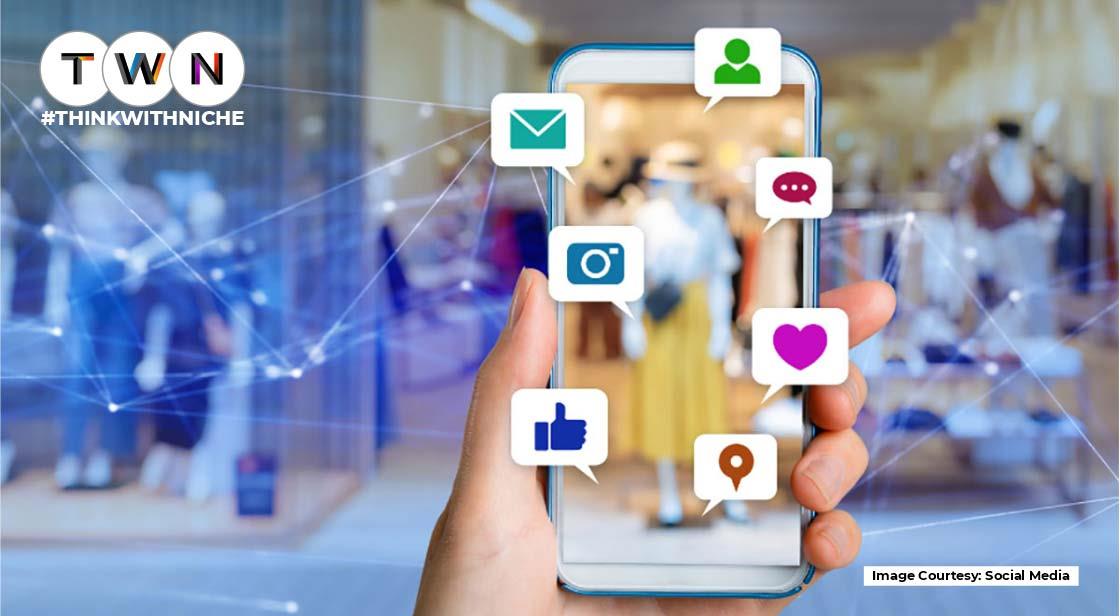What Is Content Engagement, And How Can You Improve It?

Blog Post
One of the essential components of any marketing strategy's success is Content Engagement. Many marketing professionals use a variety of features to make their content stand out in order to enhance engagement. This occasionally involves absurd and diabolical methods to make their content stand out. Because 90% of marketers use the content as their main marketing channel, content engagement is quickly becoming one of the most important parts of digital marketing. Therefore, it's crucial to comprehend all the means by which one might raise content engagement.
Since many marketers concentrate on many channels, including blogs, social media, mobile apps, etc., it's not just about one platform either. So let's get started and learn how to boost content engagement.
No matter the size or nature of your organization, Content Marketing will be one of the best techniques you find if you're looking to increase your output. It's a strategy that focuses on creating knowledgeable and persona-appropriate content to draw users to your digital platforms. The approach has a track record of success and is incredibly adaptable, allowing for many formats and encouraging creativity. But it won't work until you comprehend some of its core ideas and learn how to measure the outcomes. And in order to do it, we must discuss Content Engagement. The significance of developing content with high engagement potential must be understood by every digital marketer. More than that, they need to grasp strategies to encourage leads to interact with brand content and understand how to include it in their strategy.
Content Engagement: What Is It?
The phrase "Content Engagement" refers, generally speaking, to users' behaviors when interacting with the material. From this premise, it is easy to track and keep an eye on how the information you post online gets to the target audience. We might think of content engagement as a user signal indicating that the given piece of material was somehow pertinent to their experience. Depending on the channel, this signal is transmitted in a different fashion. For instance, a follower on Instagram has the option to like, comment on, or share a post. Additionally, they can comment on videos on IGTV or participate in polls in Stories. Any one of these activities engages the brand in conversation and, more importantly, communicates the user's interest in seeing more of that type of content.
Other very popular forms of involvement, outside social media interactions and sharing posts, include visiting links and leaving comments on blogs. Of course, some forms of involvement are more pertinent than others depending on the goals of your plan. The key idea here is that this movement creates, albeit inadvertently, a link between the company and the consumer. Unconsciously, the person begins to link the business with the value the content experience produces, forging partnerships that are incredibly devoted and long-lasting.
Additionally, we cannot ignore the issue of the algorithms used to organize internet content, which aims to provide only the materials most pertinent to the user in question. As a result, when interacting with a post from your brand, the user tells search engines like Google that they would want to see that kind of content more frequently. In this way, it is made evident how crucial Content Engagement is to SEO tactics that aim to put a company's content in the top spots of search results. It is important to note that this cannot be the only factor considered in your plan. In the buyer's journey itself, content engagement is currently far more important. The modern customer gives priority to transactions with companies that provide what they deem to be qualified experiences.
In this approach, it is essential to go above and beyond the techniques that merely aim to satisfy the requirements of the algorithm. The user experience itself should be prioritized. After all, viewers are more likely to return to your channels if they consistently appreciate your content. New trends have emerged as a result of the requirement to provide unique and captivating content in order to draw in and keep customers. A top content marketing approach today involves a tonne of interactive content and one-of-a-kind experiences.
Do you believe your content strategy is effective enough, or do you believe it could be more effective? Without accurately measuring your engagement rates, it is impossible to provide the appropriate response. Continue to the following topic to find out more about this.
How Can Content Engagement Be Measured?
Any content strategy's ongoing monitoring is essential to its success. It is feasible to find ways to maximize the approach from a data-based culture by addressing an issue or adding new tactics. Work with platforms that enable data collecting and analysis, such as Google Analytics, in order to accomplish this efficiently. You can use them to get crucial data on how users engage with your products, but you must know what you're searching for. The average time spent on a page, as supplied by Analytics, is one of the most important engagement indicators for websites.
It displays the typical amount of time visitors spend on each page of your website. Your content will not be strong enough if the time allotted is too short. If we're talking about a blog, you might observe that certain pages perform better than others when it comes to search engine rankings. The exit rate of your pages is another KPI that needs a lot of attention. A visitor to your website may leave for a variety of reasons, but a high exit rate may be a sign that this particular content is failing to interest users. After all, the objective is to maintain a high level of internal traffic, which happens when a user consumes a series of contents. This circumstance demonstrates how your plan is working to establish a strong connection with your lead.
Also Read: Five Steps To Creating A Digital Marketing Strategy
Social Media Participation
Although having a website for your business is essential, you also need to be active on other platforms, like social networking. They are great platforms for reaching new audiences and interacting with existing ones through a variety of post styles. Additionally, they are great for gauging the effectiveness of your material. Instagram, Facebook, Twitter, and LinkedIn all have in-house analysis systems that produce useful information on customer behavior. Keep in mind that each of your social media posts has its own features while analyzing their engagement.
For instance, most marketers typically ignore the engagement activity of liking a post on Facebook. Social is due to the fact that many users of this network like posts without actually reading them. Because of this, it makes far more sense for businesses to use a Facebook-focused strategy to keep tabs on how often material is shared.
What Role Should It Play In Your Strategy?
It's time to put the data you gathered into practice to enhance the outcomes of your strategy after you've measured your content engagement. Finding standards in effective materials is the simplest method to accomplish this. As we've previously stated, content with visual resources typically performs better, but as you go through the research, you'll see other qualities that stand out from the rest. For instance, interactive content is frequently considerably more interesting than static stuff. You may optimize your other content to make them more relevant to your audience by recognizing these patterns. What techniques work best to increase content engagement?
On the internet, there is a lot of rivalry for the stuff you provide, correct? Be at ease, though! It is possible to highlight your brand and establish yourself as an authority in your niche with a sound plan. To do this, it is essential to comprehend consumer thought processes and foster their participation.
Boost Brand Credibility
The client is placed at the top of the hierarchy in the present market model. When looking for a product on Google, for instance, they can pick from a variety of possibilities. The user considers the brand reputation as part of this decision-making process. Therefore, it is crucial to spend money on branding initiatives to increase trust in your company. If you can establish yourself as the subject's authority, a content marketing plan may be successful in this regard. The goal is to establish trust with the client, not to advertise the service itself.
Recognize Your Audience
Due to the size and diversity of the online audience, it is hard to satisfy everyone. As a result, the audience that matters most to your business—those who have the potential to become customers—should be the focus of your content creation. Therefore, creating a buyer persona is crucial. The persona, which is a fictional persona designed to reflect your ideal consumer, acts as a roadmap for making tactical choices about the creation of your content. When selecting the channels you will use, the language you will use, etc., you must consider the persona's traits. By doing this, you will give the customer experiences that are very valuable, increasing their desire to participate.
Provide Highest Experiences
The creation of experiences is becoming a bigger focus in internet content creation. Consider the different live performances that gained notoriety amid the isolation caused by COVID-19. In an effort to interact with their social media followers, many corporations have sponsored these online events. By the way, there is a very strong tendency toward live experiences in the digital space. The modern internet user is more connected and virtually always looking for new information. Many businesses invest in live blogging software as a result of this circumstance to guarantee improved engagement levels. Another intriguing concept is to host various kinds of events, including lectures, seminars, interviews, etc., online.
Utilize Interactive Content
Last but not least, make sure to spend money on engaging content for all of your channels. The interactive materials produce astounding engagement rates in addition to being fantastic for teaching the buyer persona, gathering consumer data, and increasing your sales. After all, the stimulus to interaction is the basis for their design. Think about an ebook as an example. In the conventional format, the reader simply reads everything without responding to it in any manner. The conversation is one-sided. To make the ebook interactive, you can include components like tests and calculators, which will provide several points of interest during the reading.
You May Like
EDITOR’S CHOICE












